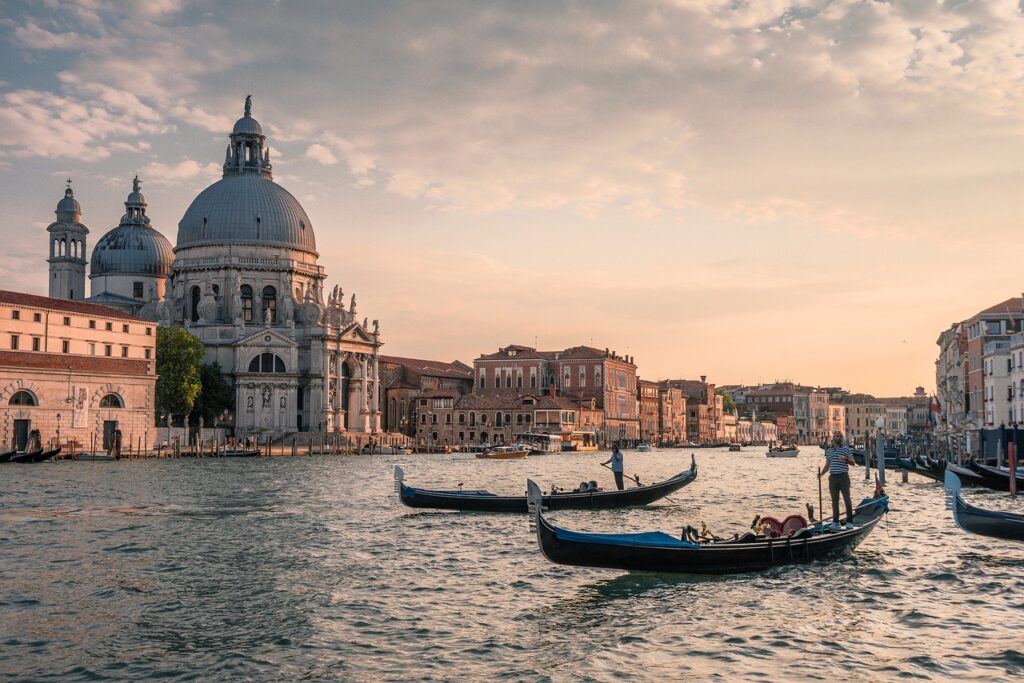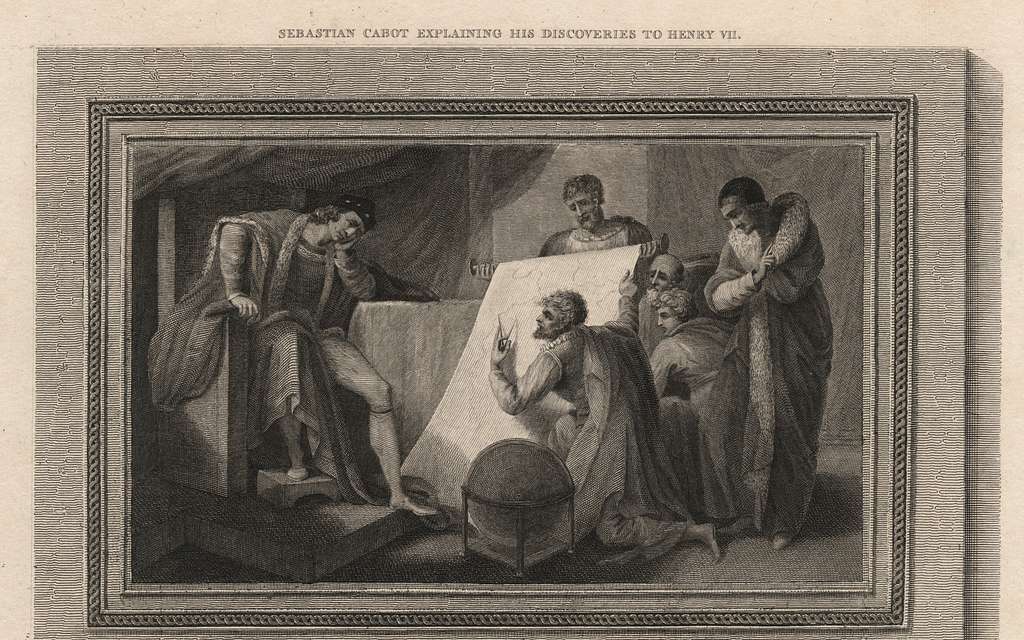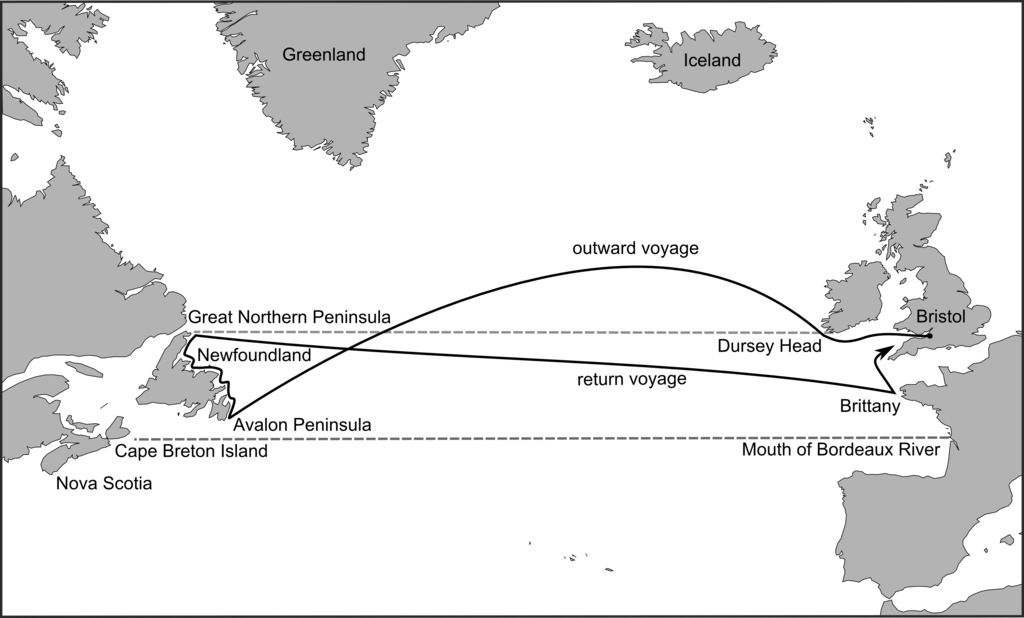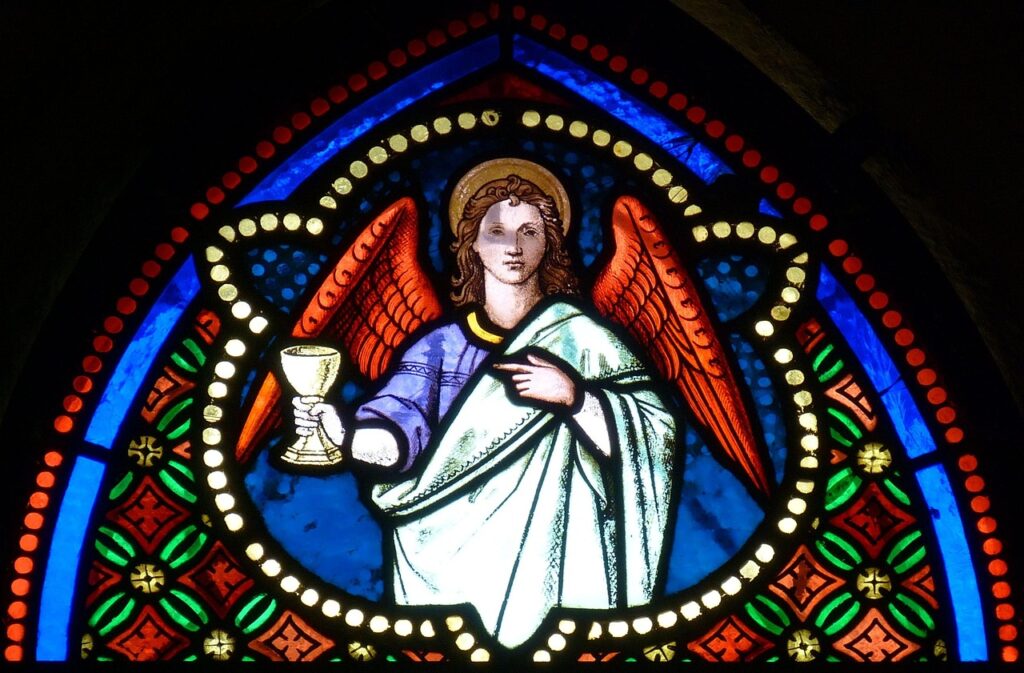
35+ Facts About John Cabot (His Legacy and New Evidence)
Facts About John Cabot
When the name John Cabot is mentioned, curiosity often follows. Many wonder how a Venetian explorer, better known in his homeland as Giovanni Caboto, managed to make history while sailing under the flag of England, so let’s clarify these facts about John Cabot.
During the late 15th century, daring journeys across the north Atlantic Ocean became a defining chapter of exploration. With the financial support of Bristol merchants and the blessing of King Henry VII of England, Cabot’s expedition would eventually open doors to new lands and lasting influence.
Surprisingly, facts about John Cabot reveal much more than a simple maritime adventure. His life of John Cabot included early struggles, moments of financial trouble, and bold attempts at charting a shorter route to Asia.
Moreover, his story has been compared to that of Christopher Columbus, although Cabot’s more northerly route placed him closer to eastern Canada and possibly Nova Scotia.
The history of John Cabot is layered with uncertainty, yet historians continue to investigate major events tied to his voyages.
Therefore, this article will explore detailed facts about John Cabot in a structured way. Readers will discover information about his early life, interesting facts, cabot’s first voyage, cabot’s second voyage, and his lasting legacy.
In addition, we will address common questions and provide clarity on the exact location of his landing place. By the end, the life of John Cabot will feel less like a mystery and more like a fascinating fact file worth remembering.
Quick Facts About John Cabot (Snippet)
- Who was John Cabot? John Cabot, born Giovanni Caboto, was a Venetian explorer who sailed under the English flag in the late 15th century.
- What did he discover? In 1497, Cabot reached the coast of North America, likely new found land or Cape Breton Island, giving England its first claim to the New World.
- What ship did he sail? He set sail on the small ship Matthew with about 18–20 crew members.
- Who supported him? Financial support came from Bristol merchants and a royal patent from King Henry VII of England.
- Why is he important? Cabot’s expeditions opened new trade routes, inspired future voyages, and marked the beginning of England’s role in colonization.
Early Life of John Cabot

Origins in Venice
The early life of John Cabot began in Italy, where he was known by his Italian name, Giovanni Caboto. Born in the early 1450s, likely in Genoa or Gaeta, he later moved to Venice with his family. By living in a city centered on maritime trade, Cabot grew familiar with the spice trade and the busy networks of the eastern Mediterranean.
Interestingly, he achieved full Venetian citizenship in 1476, granting him free authority to engage in overseas ventures. At this stage, Cabot probably interacted with local merchants, learning about new waters and new trade routes. Consequently, his curiosity about whatsoever part of the world that remained uncharted may have developed during this period.
Influence of Maritime Culture
Since Venice thrived on daring journeys, Cabot’s exposure to seafarers shaped his ambitions. The life of John Cabot was connected with opportunities offered by the growing Atlantic expedition trends of the late 15th century. Furthermore, his early training in navigation and map-making placed him in an ideal position to later set sail across the unknown.
Cabot’s First Voyage
Letters Patent and Royal Support
In 1496, John Cabot received letters patent from the king of England, Henry VII. These documents authorized him to explore whatsoever part of the world not yet claimed by other Christian rulers. The royal patent promised that any new discoveries would belong to the name of the English crown, though Cabot would bear his own proper costs.
Moreover, historian Alwyn Ruddock once suggested that Giovanni Antonio de Carbonariis, a Genoese barber turned cleric, may have played a role in supporting Cabot’s project. The presence of influential figures, combined with backing from Bristol men, allowed him to plan a historic voyage.
The Small Ship Matthew
By May 1497, a small ship named Matthew, with a crew of the Matthew numbering about 18 to 20 men, was prepared. Despite bad weather and limited supplies, the crew members demonstrated resilience. The fact file of cabot’s expedition highlights that he aimed for a shorter route to Asia but instead reached what became known as the New World.
Consequently, Cabot’s journey reached the coast of North America. Many historians argue that he first landed on Cape Breton Island or another part of eastern Canada. However, the exact location remains debated. The new evidence collected by scholars such as John Day points to provinces of heathens in new found land, though no unanimous agreement exists.
Interesting Facts About John Cabot
- One john cabot fact is that he set sail with only a small fleet and limited resources, making his success even more remarkable.
- Despite following in the wake of Christopher Columbus, Cabot charted a more northerly route across the north Atlantic Ocean.
- Fun facts include his attempt to establish possession of the land for the king of England by planting flags during his landing place exploration.
- Another detail is that cabot’s sons, particularly Sebastian Cabot, later continued voyages, expanding the family’s role in new discoveries.
- According to a historian’s letter, Cabot may have reached as far as the American coast, offering new waters for future expansion.
Notably, the life of John Cabot shows both ambition and risk. Since the return voyage after the first landing carried excitement, further expeditions were quickly considered.
Cabot’s Second Voyage
Plans for Expansion
After the success of his first expedition, enthusiasm quickly spread among the Bristol merchants and the English king. Consequently, Cabot was granted further financial support for a second expedition. The letters patent authorized him to gather said ships and assemble a small fleet. Moreover, the new route promised by Cabot seemed to offer a shorter route to the riches of Asia.
However, the second expedition carried far greater risks. With a larger crew and multiple vessels, the costs increased significantly. Additionally, Cabot’s own proper costs left him in financial trouble, but the vision of new lands outweighed the risks.
Disappearance and Mystery
The following year, Cabot’s second voyage departed. Unfortunately, the details of this daring journey remain unclear. Some sources suggest that the fleet encountered bad weather in the north Atlantic Ocean. Others claim that the crew members may have reached the Davis Strait or even sailed further along the coast of North America.
Interestingly, the exact location of their disappearance continues to challenge historians. While some argue that Cabot returned safely to Bristol, others maintain that the voyage ended in tragedy. The lack of documentation means that this chapter in the history of John Cabot is surrounded by uncertainty.
Comparison With Christopher Columbus
Shared Ambitions
It is impossible to discuss facts about John Cabot without mentioning Christopher Columbus. Both were Italian explorers seeking new trade routes to Asia. Both gained royal support, Columbus from Spain and Cabot from the king of England.
In addition, both men believed in the possibility of shorter routes across the Atlantic expedition. While Columbus ventured further south, Cabot pursued a more northerly route, which eventually brought him to eastern Canada.
Different Legacies
Although Columbus achieved greater fame, Cabot’s expeditions gave the name of England its first real claim in the New World. Therefore, Cabot’s expedition can be seen as the foundation for future English settlements in North America. Moreover, Cabot’s sons, particularly Sebastian Cabot, carried on this legacy, reinforcing the role of the family in new discoveries.
Give this article Fascinating Facts About North America (The Best 50) a read when you can? It offers some additional insights on the topic.
The Crew of the Matthew

Who Were They?
The crew of the Matthew represented a mix of Bristol men, local merchants, and possibly foreign sailors. Their daring journeys across the north Atlantic Ocean required resilience and skill. Despite limited navigational tools, they managed to reach new lands.
Interestingly, fun facts reveal that Cabot’s crew included young men seeking adventure and fortune. Some sources even claim that a young woman may have been on board, though this detail remains debated among historians.
Hardships at Sea
Life aboard the small ship Matthew was difficult. Bad weather frequently threatened their progress. Supplies were scarce, and the risk of disease spread quickly among crew members. Nevertheless, the determination to discover new waters encouraged them to push forward.
Academic Connections
John Cabot University
Today, John Cabot University in Rome serves as a modern tribute to the Venetian explorer. The institution offers graduate degrees, faculty-led programs, and courses in maritime history. By naming itself after Cabot, the university acknowledges the daring journeys of the Venetian explorer who helped reshape global connections.
American Universities and Beyond
In addition, several American universities feature courses on exploration history. Cabot’s expeditions are often studied alongside the spice trade, maritime trade, and the search for the northwest passage. Therefore, the life of John Cabot continues to inspire academic interest in new discoveries and daring journeys.
The Landing Place Debate
Different Theories
Among the most debated facts about John Cabot is the exact location of his first landing. According to John Day, a Spanish envoy who wrote about Cabot’s expedition, the Venetian explorer reached new found land. However, some historians argue that he may have landed on Cape Breton Island, while others suggest Nova Scotia or even the American coast.
Moreover, new evidence collected over the centuries still fails to provide complete certainty. The provinces of heathens, as described in early documents, could refer to several regions along the coast of North America. Therefore, Cabot’s exact location remains a mystery despite centuries of research.
Possession of the Land
Upon reaching new waters, Cabot likely followed the tradition of explorers by claiming possession of the land for the name of the English crown. Flags may have been planted, symbols drawn, and ceremonies performed to mark the territory. Interestingly, this act linked England directly to the New World, years before permanent settlements were established.
Influence of Cabot’s Sons

Sebastian Cabot
One of the most fascinating facts about John Cabot is the role of his son, Sebastian Cabot. After Cabot’s disappearance, Sebastian became an important figure in further expeditions. Supported by the English king, he explored parts of the American coast and the Davis Strait.
In addition, Sebastian Cabot worked with both Spanish and English crowns, demonstrating remarkable political skill. His contribution to new discoveries reinforced the family legacy of daring journeys and maritime trade.
Other Family Members
Cabot’s sons were not limited to Sebastian. Several of them, though less famous, played roles in maritime projects. Collectively, cabot’s sons ensured that the history of John Cabot did not fade quickly after his own expeditions ended.
The Role of Bristol Merchants
Financial Support
Without Bristol merchants, many of the most important facts about John Cabot would never have taken place. Local merchants from Bristol provided crucial funds and supplies. Their involvement reflected an interest in new trade routes and potential profits from exotic goods.
Furthermore, cabot’s expedition depended heavily on the trust and risk-sharing of these financial backers. Despite the dangers of the north Atlantic Ocean, the promise of a shorter route to Asia made the gamble worthwhile.
Maritime Trade Links
At the same time, Bristol men were already familiar with maritime trade. Their experience in shipping fish, wool, and other goods across Europe gave them confidence in supporting bold ventures. Moreover, their belief in new trade routes encouraged them to invest in Cabot’s projects, linking local interests with global discoveries.
John Cabot and the Northwest Passage
The Dream of a Short Route
One compelling john cabot fact is his belief in a northwest passage. Like many explorers of the late 15th century, Cabot hoped to find a short route to Asia by traveling west. The idea of connecting the spice trade of the eastern Mediterranean with Europe through new waters drove his ambitions.
Consequently, Cabot’s search for a more northerly route became a cornerstone of his voyages. Although he never succeeded in reaching Asia, his exploration of the coast of North America provided valuable information for future expeditions.
Long-Term Impact
Over time, the dream of a northwest passage shaped European exploration. Therefore, Cabot’s daring journeys served as an early chapter in a centuries-long quest. The new route he sought became a legend that inspired generations of explorers and navigators.
Historic Voyage of 1497

Major Events at Sea
The 1497 expedition is often remembered as one of the most daring journeys of the late 15th century. Cabot’s small ship Matthew braved the north Atlantic Ocean with limited supplies. Moreover, the crew members endured storms, fog, and the constant fear of shipwreck. Despite bad weather, they managed to cross into new waters within weeks.
Surprisingly, this short route was much faster than expected. Cabot’s crew of the Matthew recorded the sight of land after about 35 days at sea. According to a john cabot fact preserved in early accounts, the sailors believed they had reached Asia. In reality, they had arrived at the coast of North America.
First Encounters
Upon reaching the new world, Cabot observed native people from a distance. Reports suggest that contact was limited, as his focus remained on claiming possession of the land for the name of the English crown. Nevertheless, the presence of native people indicated thriving communities across eastern Canada and new found land.
The Return Voyage
Celebrations in England
After setting sail back across the Atlantic, Cabot’s return voyage was met with excitement. The English king rewarded him with financial support and promises of further expeditions. Moreover, the name of England gained credibility as a player in global exploration, rivaling Spain and Portugal.
In addition, Bristol men who had invested in the expedition celebrated the prospects of new trade routes. The promise of new lands stirred ambition among local merchants and sailors. Therefore, the history of John Cabot entered a new stage of recognition.
Plans for Future Expeditions
Inspired by this success, preparations for cabot’s second voyage began almost immediately. Said ships were gathered, and the royal patent granted Cabot authority for another attempt. Unfortunately, as history shows, the following year brought uncertainty and possible tragedy.
Interesting Facts About John Cabot
Fun Facts and Curious Details
Exploring fun facts about Cabot’s expedition reveals fascinating details:
- One john cabot fact is that the voyage was financed not by the crown alone but heavily by Bristol merchants.
- Cabot believed he had reached the eastern Mediterranean region of Asia rather than the American coast.
- The Matthew was a relatively small ship, yet it successfully carried cabot’s crew across the vast Atlantic expedition.
- Cabot’s free authority under the royal patent gave him rights over whatsoever part of the world he discovered.
- A fact file from historian John Day suggests Cabot described the new lands as fertile, rich in resources, and filled with opportunities.
A Legacy of New Discoveries
Because of these discoveries, the king of England saw great promise in further voyages. Cabot’s daring journeys inspired more northerly expeditions, some even leading to the Davis Strait. Interestingly, cabot’s sons, especially Sebastian, carried on this ambition by working with multiple European powers.
The Role of Faith and Clerics

Giovanni Antonio de Carbonariis
Among the interesting facts about John Cabot is his connection with Giovanni Antonio de Carbonariis, a cleric from Italy. Some historians argue that Carbonariis may have joined Cabot’s first voyage. If true, his role would have been significant in guiding spiritual aspects of the expedition.
Religious Influence
Since exploration was often tied to spreading Christianity, possession of the land involved religious as well as political claims. Consequently, the provinces of heathens were considered both opportunities for conversion and expansion of the name of the English crown.
Would you mind read this article Interesting facts about mission San Jose when you have a moment.
Facts About John Cabot: Legacy and New Evidence
Historical Records
Over time, historians pieced together fragments of Cabot’s story from letters, maps, and royal records. A significant contribution came from John Day, whose correspondence offered early insights into Cabot’s landing place. Furthermore, historian Alwyn Ruddock devoted years to Cabot’s research, though much of her work remained unpublished after her death.
Interestingly, new evidence continues to emerge. For example, scholars have debated whether Cabot reached further south along the American coast than previously believed. Although the exact location remains unknown, his presence in new waters is widely accepted.
Impact on England
Because of Cabot’s expeditions, the name of the English crown gained a foothold in North America. This claim became important centuries later when England began establishing colonies. Moreover, the life of John Cabot symbolized the possibility of rivaling Spanish and Portuguese power through maritime trade.
Fact File on Cabot’s Life
- John Cabot was born Giovanni Caboto, an Italian explorer who gained full Venetian citizenship in 1476.
- He received a royal patent from King Henry VII of England in 1496.
- His first historic voyage in 1497 was made aboard the small ship Matthew.
- Cabot’s expedition aimed for a shorter route to Asia but instead reached new found land and eastern Canada.
- He set sail with around 18–20 crew members, mostly Bristol men.
- Cabot likely planted flags and performed ceremonies to claim possession of the land.
- His return voyage was celebrated in England, giving hope for new trade routes.
- Cabot’s second expedition vanished, with theories pointing to bad weather or possible exploration of the Davis Strait.
- Sebastian Cabot, his son, continued exploring and became a key figure in maritime history.
- John Cabot University in Rome honors his memory with programs on history and international studies.
Facts About John Cabot: Frequently Asked Questions
What was the main achievement of John Cabot?
His main achievement was reaching the coast of North America in 1497, giving England its first claim to the New World.
Did John Cabot meet Christopher Columbus?
There is no evidence they met, though both explorers shared Italian origins and similar goals of reaching Asia by sailing west.
Where did John Cabot actually land?
Historians debate the exact location, with suggestions including Cape Breton Island, Nova Scotia, or new found land.
How many ships did Cabot command?
His first voyage used the small ship Matthew, while cabot’s second voyage involved a small fleet.
What happened to Cabot’s second expedition?
It remains uncertain. Some accounts suggest storms in the north Atlantic Ocean ended the voyage, while others believe he returned secretly to Bristol.
Why is John Cabot remembered today?
He is remembered as a daring Venetian explorer who paved the way for English expansion into the New World and inspired future voyages.
I’d recommend reading this article The Best 25 Interesting Facts About Georgia Colony. It could add some valuable context to our discussion.
Facts About John Cabot Conclusion
Ultimately, facts about John Cabot reveal a life filled with daring journeys, bold risks, and significant achievements. Although his early life in Venice shaped his skills, it was his service to the king of England that secured his place in history.
His discovery of new lands along the coast of North America connected the name of England with new discoveries and long-term colonial ambitions.
Therefore, the history of John Cabot reflects both triumph and mystery. While the exact location of his landing remains debated, his legacy as a Venetian explorer who helped chart new waters is undeniable.
From his links with Bristol merchants to the enduring role of cabot’s sons, his impact echoes through time.




